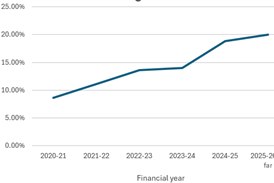In the latest HSJ Progress to Paperless survey, 19 out of 24 senior leaders said they believe Jeremy Hunt’s target for a paperless NHS by 2018 is a great ambition but the target is unrealistic.
Sponsored comment by Boardpad
In the survey, the three top barriers named as hampering the achievement of a digital NHS were the lack of joined-up working between primary, secondary and community care; the lack of funding; and the amount of time it takes to procure and deploy new systems.
When it comes to implementing large-scale IT projects, the key questions each healthcare organisation should ask itself before making a decision are:
- Do we have the right infrastructure in place that is stable, reliable and quick to allow clinicians and managers to securely access adequate information?
- Do we have the funding to support it?
- What do we want to achieve in return?
Strong leadership is required to increase healthcare digitisation. Those who understand the gap between clinical, technical and commercial complexity must be involved in driving integrated digital care.
Critical assets
The ambition for a paperless NHS focuses on implementing the right solutions to quickly and efficiently provide crucial health information both to healthcare professionals and patients. We all agree that information is a critical asset in healthcare.
“The paper to digital challenge is all about choosing the right technology”
The way we capture and use information is crucial, not only in GP practices and hospital wards, but also in NHS administration. The paper to digital challenge is all about choosing the right technology to support and deliver best patient care.
In the survey we ran with HSJ, 20 out of 24 people who responded to the question suggested paperless meetings should be considered an important part of progressing towards the paperless NHS. Shouldn’t NHS executives consider bringing the paperless revolution to the boardroom and lead by example?
A digital way of managing meetings and documents in a secure environment offers several potential benefits to the health service. The process of producing and distributing digital material eliminates the costs of photocopying, printing, binding and courier deliveries, not to mention the resource time required to collate the material in the first place.
Perhaps if the digital change comes from board level and gradually moves towards the other areas, there will be a much bigger chance of succeeding.
Mike Evans is chief executive officer of BoardPad
Survey: are we truly going paperless?

An HSJ survey captures the progress of the digital revolution in the NHS and takes a close look at what is really lacking. By Claire Read
- 1
 Currently
reading
Currently
reading
The route to paperless must be steered by boards






























1 Readers' comment